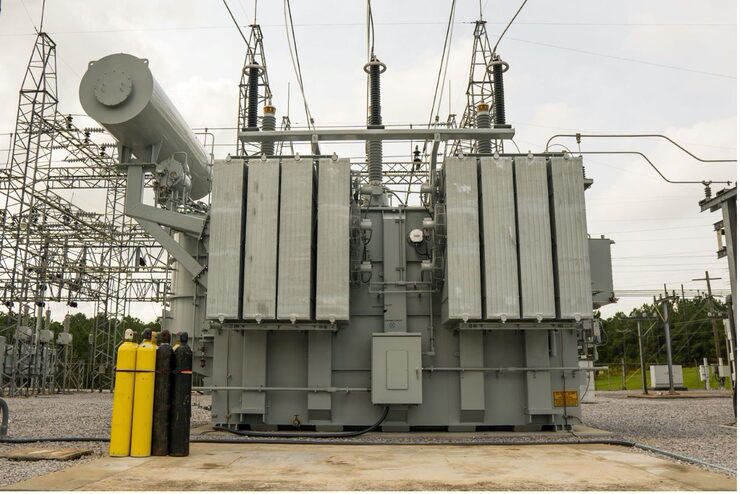Key Takeaways:
- Understanding the fundamentals of SAN storage and its role in unified storage environments.
- Exploring how SAN can enhance data center performance and offer scalability.
- The importance of SAN storage in disaster recovery and how it can optimize costs.
- Current trends in SAN storage technology and tips on selecting the right solution.
Introduction to SAN Storage Solutions
In the era of data explosion, businesses grapple with how best to store, manage, and protect their critical data assets. This is where Storage Area Networks (SANs) come into play, offering a sophisticated and dedicated environment for managing voluminous data. SANs provide a high-speed network that connects servers to their storage devices, allowing for a more centralized and efficient data management approach. As a next-level storage solution designed to cope with extensive data needs, SAN storage solutions have emerged as the backbone of modern IT infrastructures, asserting themselves as essential components within versatile and high-performance computing landscapes.
Historically, they were directly attached to the servers they served, known as direct-attached storage (DAS). While simple, DAS systems quickly became inadequate due to their limitations in scalability and flexibility, which are critical in the face of burgeoning data volumes and evolving business needs. SANs, on the other hand, revolutionized data storage by introducing a network dedicated solely to storage, separating it from the rest of the data processing network.
Understanding the Role of SAN in Unified Storage Environments
In unified storage environments, where block and file storage coexist harmoniously within a singular framework, the role of SANs is undeniably pivotal. SANs effectively cater to block-level storage requirements, essential for applications and databases that demand high throughput and low latency. This seamless integration within the unified storage context simplifies data management processes and substantially augments data access speeds, rendering SANs indispensable for organizations pursuing peak operational efficiency. By embracing SAN architectures, businesses can reap the benefits of consolidated resources, agile data provisioning, and a fortified storage infrastructure capable of adapting to dynamic data demands.
How SAN Enhances Performance and Scalability
Performance and scalability are key attributes that SAN storage solutions bring to the table. Organizations with SANs benefit from detaining storage tasks to a network dedicated to that purpose alone, relieving the compute resources from expending energy on storage-related processes. This means that servers can be more effectively utilized for processing tasks, thus enhancing the overall system efficiency and throughput. Moreover, when companies experience growth and expand their data footprint, SANs provide much-needed flexibility. They allow for expansions and enhancements without causing disruptions to existing configurations—an invaluable agility in the rapid-paced business world.
SAN Storage Architecture Explained
The architecture of a SAN entails a realm of high-speed networks, primarily leveraging two protocols: Fiber Channel (FC) and Internet Small Computer Systems Interface (iSCSI). FC is well-known for its speed and reliability, making it a top choice for enterprises with heavy data workloads. On the other hand, iSCSI provides a more cost-effective SAN experience using Ethernet technology. This makes it an attractive option for organizations looking to implement a SAN system without requiring specialized cabling and switches associated with FC. The selection between Fiber Channel and iSCSI can be influenced by several factors, including performance demands, available budget, and infrastructure compatibility. It should be made carefully considering each protocol’s merits and drawbacks.
SAN and Disaster Recovery Planning
Data loss can be catastrophic for any business, accentuating the indispensable role of SANs in any comprehensive disaster recovery plan. SANs offer advanced features such as data replication and snapshots, which can be invaluable when recovering from a disaster. These functionalities enable businesses to maintain up-to-date copies of critical data in geographically disparate locations, facilitating rapid restoration and business continuity in adversity. The resilience of SANs during such crises is evident, as they can provide high availability and near-zero downtime, ensuring that organizations can bounce back swiftly and maintain their operations even under duress.
Optimizing Cost and Efficiency with SAN Storage
Contrary to the assumption that high-performance storage solutions have prohibitive costs, SANs can optimize costs through smarter resource allocation and management. By centralizing storage resources, businesses can enjoy economies of scale and more favorable total ownership costs. Additionally, the efficiency gains from a SAN, in the form of reduced downtime and enhanced performance, can translate into tangible economic benefits for the organization. These cost efficiencies align directly with objectives to escalate profitability and should not be overlooked when considering implementing SAN storage solutions within the enterprise ecosystem.
Security Considerations in SAN Storage Deployment
Alongside the technical prowess of SANs, security remains a top concern as organizations look to protect their data from breaches and unauthorized access. The deployment of a SAN should be coupled with comprehensive security measures such as robust access controls, encryption, and consistent monitoring to mitigate risks. Regular security audits are also paramount in ensuring the SAN environment remains impervious to vulnerabilities. Security strategies must be dynamic and evolve to address emerging threats.
The Future of SAN Storage Technology
As we look towards the horizon of SAN storage technology, the continuous trajectory of innovation is clear. Emerging technologies, such as artificial intelligence (AI) and machine learning, are beginning to influence how SAN storage systems are managed and optimized. Automation is another area poised to enhance SAN systems; as storage demands increase, the ability to dynamically adjust and provision resources with minimal human intervention will become increasingly paramount. The future of SAN is an exciting frontier with opportunities for technological advancements that will potentially revolutionize the storage domain, driving efficiency and performance to new heights.
Case Studies: Success Stories of Implementing SAN Storage
Across various sectors, from healthcare to finance to technology, adopting SAN storage solutions has been a game-changer. These case studies serve as testimonials to the reliability and versatility of SANs and as blueprints for what can be achieved with strategic storage planning and implementation. Whether streamlining workflows, improving data accessibility, or bolstering security measures, SANs have proven their worth time and time again, offering a glimpse into the potential benefits for organizations considering a transition to this robust storage framework.
Choosing the Right SAN Storage Solution for Your Organization
Selecting an appropriate SAN storage solution is a critical decision that can have long-term implications on an organization’s operational efficiency, scalability, and data governance. Decision-makers must account for various factors, including existing infrastructure, projected data growth, performance requirements, financial constraints, and overall IT strategy. Consulting industry reports and leveraging available decision-support tools can facilitate this decision-making process, ensuring a tailored solution that can accommodate specific needs while positioning the organization for future developments in storage technology.

 Health1 year ago
Health1 year ago
 Tech1 year ago
Tech1 year ago
 Games10 months ago
Games10 months ago
 NEWS1 year ago
NEWS1 year ago
 Entertainment1 year ago
Entertainment1 year ago
 Games1 year ago
Games1 year ago
 Games1 year ago
Games1 year ago
 Entertainment1 year ago
Entertainment1 year ago








